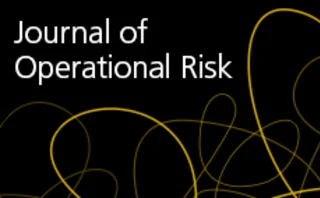Expected shortfall
A helping hand – Addressing industry concerns
The Basel Committee on Banking Supervision’s final revisions to the FRTB guidelines aim to address industry concerns around complexity and capital implications. A forum of industry leaders discusses whether the changes have been effective and how banks…
Turning the IMA into a competitive advantage
Following the clarification of the FRTB rules in January 2019, financial institutions are now working towards a 2022 implementation deadline, finalising how their trading books will operate under this demanding regulation. Eoin Ó Ceallacháin, head of…
From log-optimal portfolio theory to risk measures: logarithmic expected shortfall
In this paper, the authors propose a modification of expected shortfall that does not treat all losses equally. We do this in order to represent the worries surrounding big drops that are typical of multiperiod investors.
The utility of Basel III rules on excessive violations of internal risk models
In this paper, the author looks at the efficacy of risk measures on energy markets and across several different stock market indexes, and calculates both the value-at-risk (VaR) and the expected shortfall (ES) on each of these data sets as well as on…
Banks hope final FRTB rules will ease NMRF burden
Internal models approach buoyed by more liberal rules on price observations and risk factor aggregation
Podcast: Kenyon and Berrahoui on the pitfalls of PFE
Quants propose replacement to existing credit risk measure
Does credit risk need an expected shortfall-style revamp?
Quants propose tail risk-sensitive measure for counterparty credit risk
Counterparty trading limits revisited: from PFE to PFL
The potential future loss is proposed as a replacement for PFE
VAR restrictions ‘will hit returns’ for sophisticated traders
VAR cap can be even more constraining than a short-selling ban, researchers find
Back to backtesting: integrated backtesting for value-at-risk and expected shortfall in practice
This paper aims to reflect the current state of the discussion on the validation of market risk forecasts by means of backtesting.
Libor reform threatens risk modelling under FRTB
Dearth of liquid products and historic data threatens banks with capital hit under new market risk rules
Quants tout improved expected shortfall backtest
Measure aims to provide better gauge of VAR violations
New backtests for unconditional coverage of expected shortfall
In this paper, the authors present a new backtest for the unconditional coverage property of expected shortfall.
Estimation window strategies for value-at-risk and expected shortfall forecasting
This paper analyzes the impact of different estimation window strategies, including structural breaks and forecast combinations, on forecasting common risk measures such as VaR and ES.
New method proposed for modelling large op risk losses
Outsize loss events modellable through extension of approach to measuring moderate losses, says research
Modeling very large losses
In this paper, the author presents a simple probabilistic model for aggregating very large losses into a loss collection.
Rogue traders versus value-at-risk and expected shortfall
VAR and ES are ineffective to deter rogue trading
How not to control trading behaviour
Quants show popular risk measures fail to limit risk-seeking behaviour among traders
Curbing rogue behaviour
Regulators should try to combat rogue trading by measuring traders’ risk-taking differently, say quants
JSCC margin changes ease Japan interest rate pain
Negative rates prompted switch in the CCP’s margin calculation model for interest rate swaps
Estimation risk for value-at-risk and expected shortfall
This paper provides a detailed analysis of the relationship between approximate VaR (ES) and exact VaR (ES) by finding a linear regression model in which the response variable is the approximate VaR (ES) and the explanatory variable is the exact VaR (ES)…
Inefficiency and bias of modified value-at-risk and expected shortfall
This paper compares mVaR and mES estimators with VaR and ES under normal and fat tailed t-distributions.
A note on the statistical robustness of risk measures
This paper focuses on the parametric estimators of risk measures and uses Hampel’s infinitesimal approach to derive the robustness properties.
Banks worry FRTB will fracture Asian trading desks
Rules could produce “lots of little country desks”, warns StanChart market risk head


















